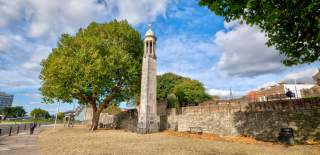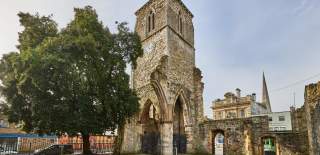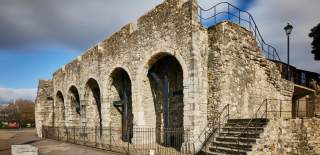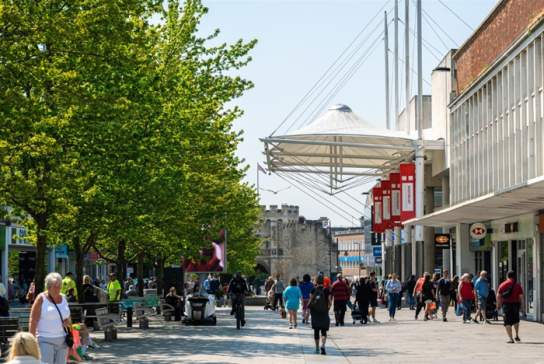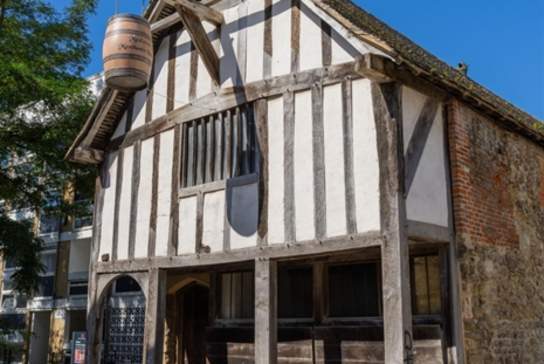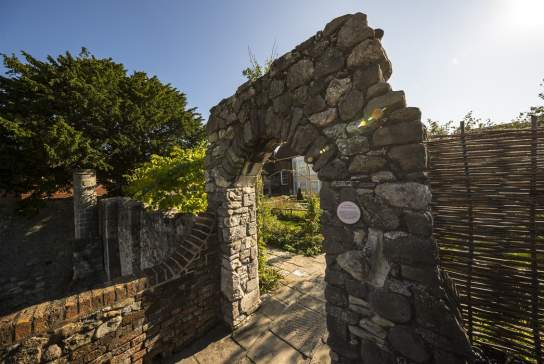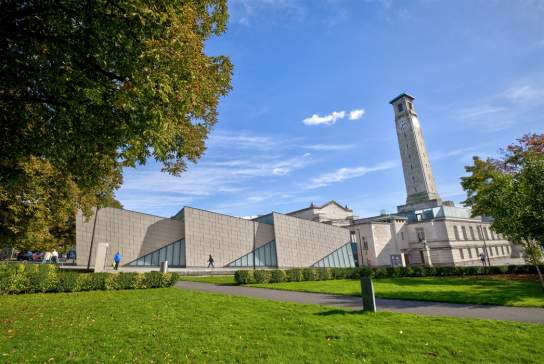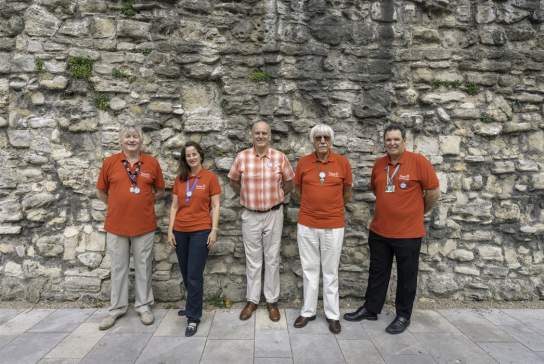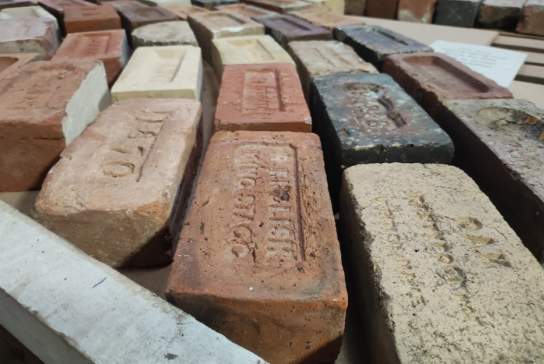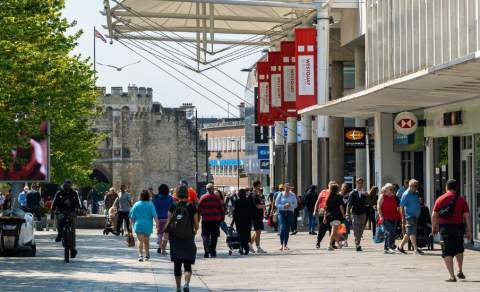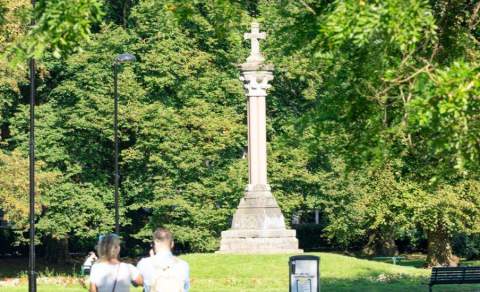City History
Southampton is a city full of heritage waiting to be discovered. From maritime connections to historic voyages such as the Mayflower to literary links to Jane Austen, what will you discover?
Southampton: a city full of undiscovered heritage
While it's true that Southampton had some Roman and Saxon inhabitants, the city first came to be an important port when the Normans arrived in 1066, serving as the main connection to their lands in Normandy and the South of France.
The Bargate in the centre of the High Street was built as the main entrance to the medieval walled town circa 1180 AD. and has been judged as "probably the finest, and certainly the most complex, town gateway in Britain”. It has had many uses, including holding the city’s original Guildhall, where merchants gathered for hundreds of years; during World War II it was used as an air-raid shelter helping the residents survive the bombings.
Much of the medieval city walls also still survive, together with the vaults where the merchants stored their wine.
The Mayflower
In 1620 the group now known as the Pilgrims chartered the Mayflower, to sail to the New World to escape religious oppression in England. They sailed with another smaller boat, the Speedwell, which was originally built in Southampton, but this was abandoned in Plymouth because it leaked so badly.
Now, over 30 million US citizens are descended from those who sailed there on the Mayflower. Fun fact, Southampton celebrated the 400th anniversary of the sailing in 2020.
Military history
The port has always been used to embark soldiers. Henry V marched his troops through the Westgate (pictured here) to sail for France and the battle of Agincourt.
Much later, soldiers left to fight in World War 1, and in the Normandy Invasions of World War II. These included many American and Commonwealth troops.
Maritime history
From the middle of the 1800’s, Southampton has been famous for being a liner port. In 1912, the world’s most famous liner, The Titanic, embarked from here on its fateful maiden voyage, carrying seven hundred Southampton residents in her crew, over five hundred of whom would never return.
Hundreds of other liners connected the port with the Empire and with America, making it Britain’s “Gateway to the World”. The rise of the aeroplane saw much of that trade depart, but now the big ships have returned as Cruise Liners, with over 500 visiting every year.
Discover more at SeaCity Museum.
Aviation history
Southampton was also the home of some of the first flying boats, and it is thought that the term ‘air port’ was first used in reference to Southampton in this role.
Local resident RJ Mitchell designed and built the Spitfire in Woolston, east of the Itchen River, and it had its maiden flight from what is now Southampton airport. Local people kept production of this vital plane going throughout the war.
To see real life examples of spitfires and flying boats, visit Solent Sky Museum.
Literary links
Famous Sotonians include Jane Austen, the renowned novelist, who lived in the Old Town of Southampton from 1807 to 1809. It’s even rumoured that Southampton Water, a tidal estuary, is the site where King Canute tried to hold back the tides – and there’s a plaque to “prove” it!
(All of the above content has been kindly provided by See Southampton)
More to discover
Head out on your own adventure with Visit Southampton's free self-guided heritage tour. On your walk you will discover key places of interest from our city's medieval walls and vaults to many of the historic buildings still in use today. Download the heritage map here.
Top historic attractions in and around Southampton
King John's House & Heritage Centre
- 13 Church Street
Three historic buildings on one site: Medieval King John's House, containing 14thC graffiti and rare…
Eling Tide Mill Experience
- The Visitor Centre
A day out at the Eling Tide Mill Experience has something to offer for everyone. The Grade II*…
Hollybrook Memorial
- Tremona Rd
The Hollybrook Memorial commemorates almost 1,000 service men of the Army and Air Forces who…
Medieval Merchants House
- 58 French Street
Within walking distance of Southampton city centre, the Medieval Merchant's House once stood on one…
Medieval Town Walls
- 37 Upper Bugle Street
Step back in time and explore the rich history of Southampton through its impressive medieval town…
SeaCity Museum
- Havelock Road
Based at the heart of Southampton, SeaCity Museum tells the story of the people of the city, their…
See Southampton
- Bargate Lions
See Southampton and Southampton Tourist Guides Association Southampton's History Guided Tours…
Solent Sky Museum
- Albert Road South
Hampshire and the Solent region were the centre of the world for aviation research and development…
Steamship Shieldhall
- Berth 110
Steamship Shieldhall is the largest working steam ship in Britain. A member of the National Historic…
The Brickworks Museum
- Swanwick Lane
Discover one of the UK’s most unique industrial heritage gems at The Brickworks Museum…
More about Southampton's history
60 facts about Southampton
- 6 min read
On 24th February 2024, Southampton will commemorate its remarkable 60-year journey as a city…
Gateway to the world: a potted history of Southampton
- 5 min read
Roman settlement, medieval gateway, Agincourt, Mayflower, fashionable Georgians, golden age of…
10 Must-see Landmarks Unearthing Southampton’s History
- 3 min read
Southampton is a bustling coastal city drenched in history, with roots dating as far back as the…
Hotels with History
- 2 min read
Our city has a rich maritime history and much of this can be celebrated in places to stay. Take a…

